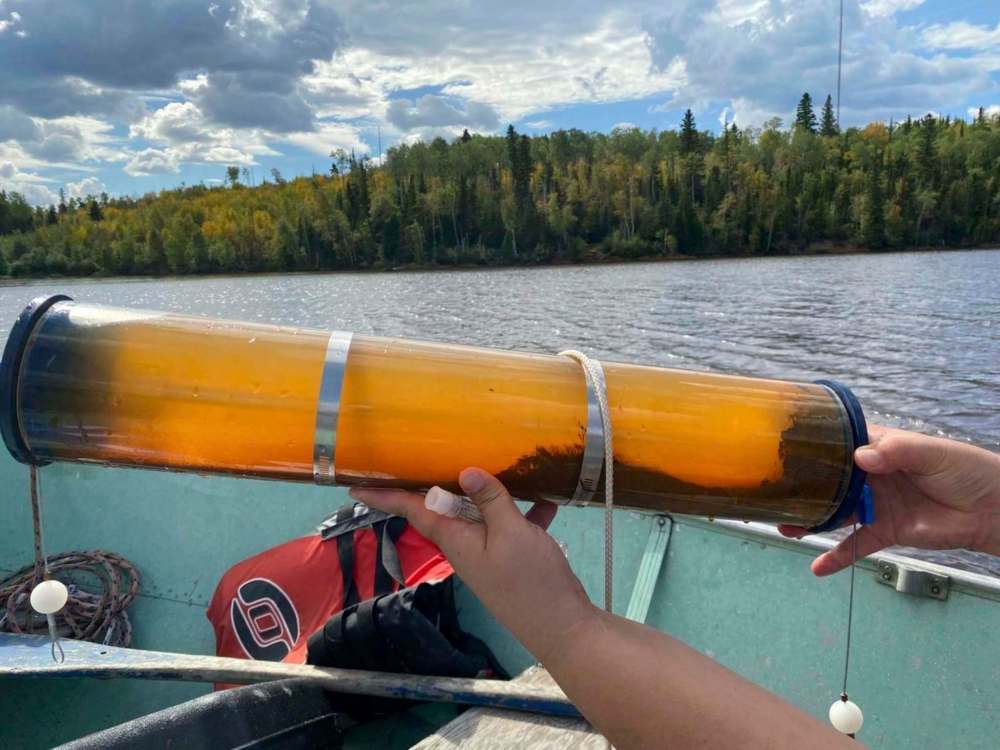Contamination concerns bubble up at Manitoba lakes
Advertisement
Read this article for free:
or
Already have an account? Log in here »
To continue reading, please subscribe:
Monthly Digital Subscription
$19 $0 for the first 4 weeks*
- Enjoy unlimited reading on winnipegfreepress.com
- Read the E-Edition, our digital replica newspaper
- Access News Break, our award-winning app
- Play interactive puzzles
*No charge for 4 weeks then billed as $19 every four weeks (new subscribers and qualified returning subscribers only). Cancel anytime.
Read unlimited articles for free today:
or
Already have an account? Log in here »
Hey there, time traveller!
This article was published 24/10/2021 (913 days ago), so information in it may no longer be current.
From bright-orange lake water that stains clothing to slime plugging up pipes, lakes across Manitoba are swimming in metals and toxins that could make fish unsafe to consume.
Recently, the Manitoba Metis Federation raised the alarm about high concentrations of metals found at two lakes near Sherridon, 650 kilometres north of Winnipeg.
The finding is nothing new, according to a biologist who has done extensive research on Manitoba groundwater.

“There has been a need for serious environmental protection for nearly a century — that is how far back some of these legacies go,” wrote Eva Pip, a retired University of Winnipeg biologist.
On Aug. 30, the Métis federation had the private testing lab ALS Environmental gather and analyze 12 samples of water and sediment from two lakes near Sherridon.
The analysis showed toxic metals in Camp Lake, near the site of a former copper-zinc and sulphide ore mine that closed in 1951. The province had commissioned a private firm to remediate its tailings pond by mid-2021, but the analysis suggests there are still numerous toxins at that site.
The samples also seem to confirm previous provincial reports metals are seeping into the much larger Kississing Lake, which many Métis and tourists use for fishing.
The Free Press asked Pip to analyze the lab tests. She said they show extremely high levels of iron in all 12 samples, which is not considered a toxin in humans even when the water is dark-orange, because it’s not used for drinking water.
However, the four sediment samples had very high concentrations of copper and zinc, as well as amounts of arsenic and cadmium that exceed federal guidelines at some sites.
“These are contaminated sites and these habitats would not be suitable for fish because of elevated concentrations of toxic metals,” Pip wrote.
The problem, she said, is toxic metals don’t degrade into other substances. That means fish and organisms bioaccumulate the metals, storing an increasing amount of them over time. Those toxins can interact with each other, and kill the organism.
Pip said experts have been concerned for decades about contamination not just in that area, but near numerous former mines across the province.
“This is typical of northern Manitoba environments that are contaminated with mine tailings leachate. Sadly, there are hundreds of such sites in the province,” she wrote.
She noted federal standards only apply to drinking water, making it hard to assess potential harms in lakes used for swimming and fishing. There are federal guidelines on sediment and water quality but not enforceable regulations.
“It is possible some of the other parameters might be of concern, but we have no guideline reference to compare them to,” she wrote.
The province’s orphan and abandoned mines rehabilitation program is working to remediate 11 sites Manitoba deemed to be hazardous in 2006. Three of these are located in the southeast, while the other eight sit north of Lake Winnipeg.
Pip says there are dozens more contaminated sites but they aren’t deemed a public hazard because how remote they are, even when people use them for fishing.
“Most of these mines are located away from the public eye, and therefore this issue is seldom of public or legislative concern,” she wrote, arguing loose regulation has allowed companies to effectively abandon these sites.
“There seems to have been little interest by the series of provincial governments to tackle this issue, as mining is viewed as beneficial for the provincial economy.”
Conservation Minister Sarah Guillemard declined an interview, with her office referring to a written statement from her department.
“The province takes the work of mine remediation and water quality very seriously, and has dedicated millions of dollars to this work,” a spokesman wrote.
The department said it has met with the MMF and is analyzing how its lab samples fit in with the province’s ongoing monitoring and remediation.
“While site work was completed this fall, Manitoba will continue to work with the local community and be involved at the Sherridon Mine site to manage the long-term care and maintenance of the site,” a provincial spokesman wrote.
Yet, Pip argues Manitobans need to push for better regulations and faster clean-up, or these hazardous sites will persist for even more decades.
“Accountability, ethics and respect for our life support system are alien concepts here.”
dylan.robertson@freepress.mb.ca
Water and sediment analysis from Clear and Kississing Lakes, plus Prof. Eva Pip analysis
History
Updated on Tuesday, October 26, 2021 10:12 AM CDT: Fixes typo
Updated on Tuesday, October 26, 2021 5:31 PM CDT: Corrects name of lake in cutline


